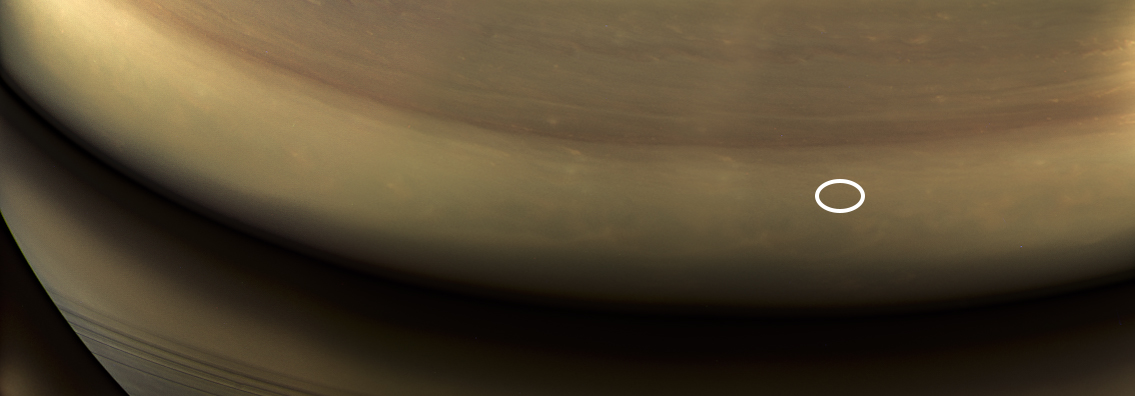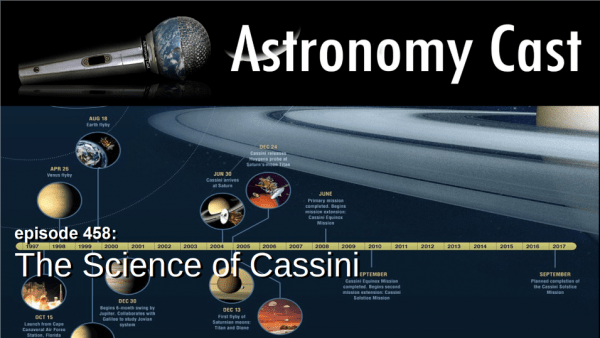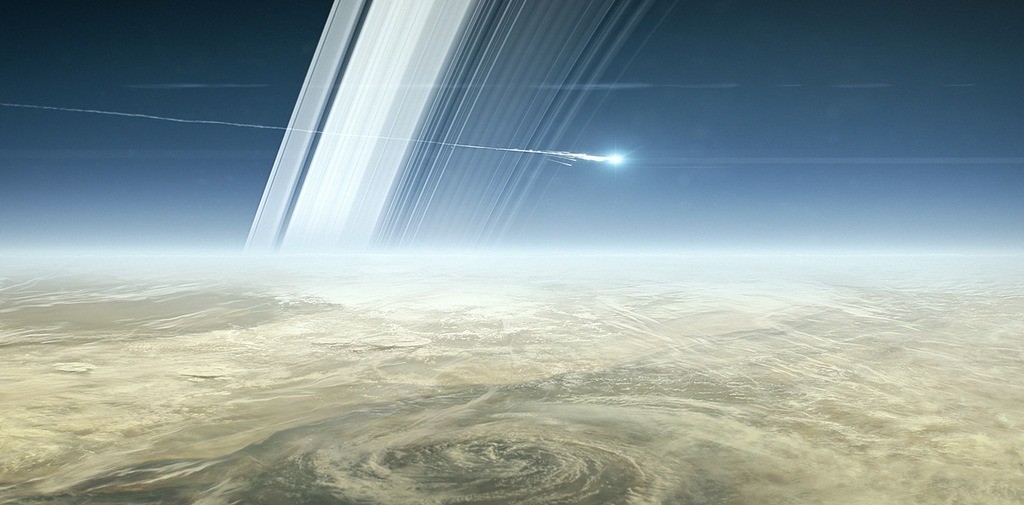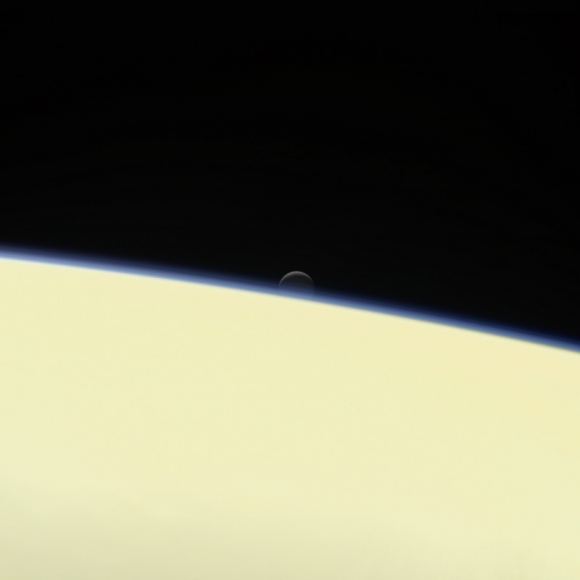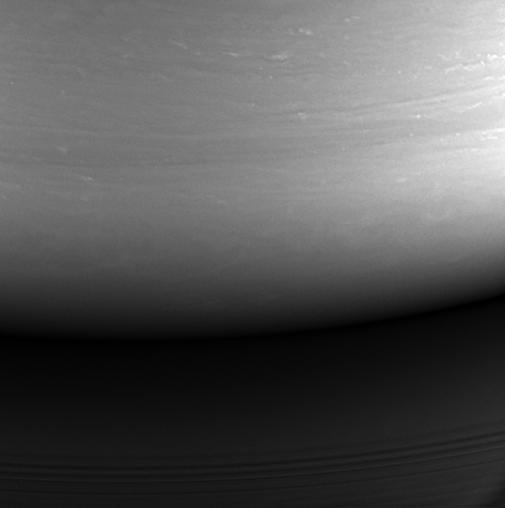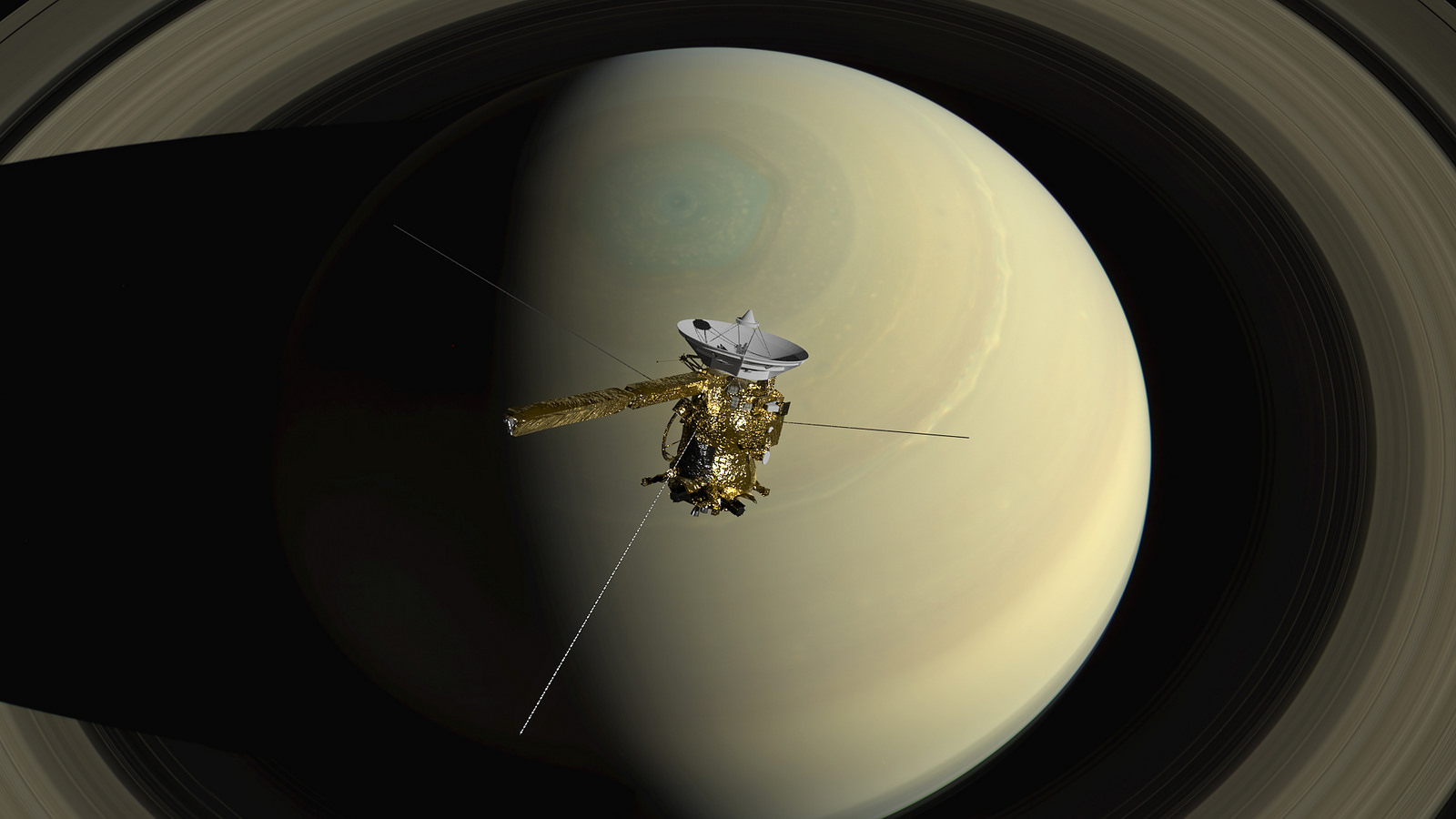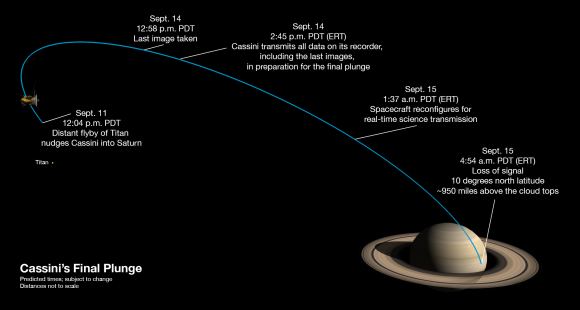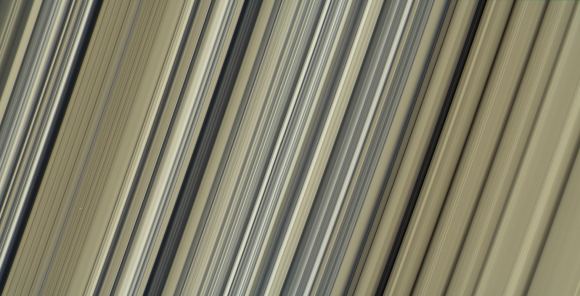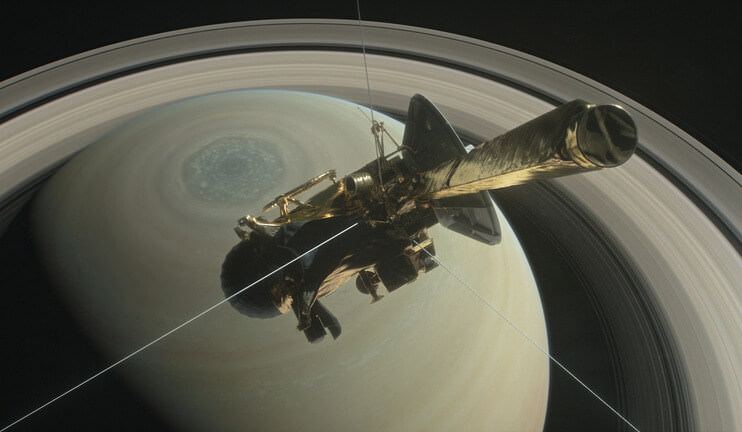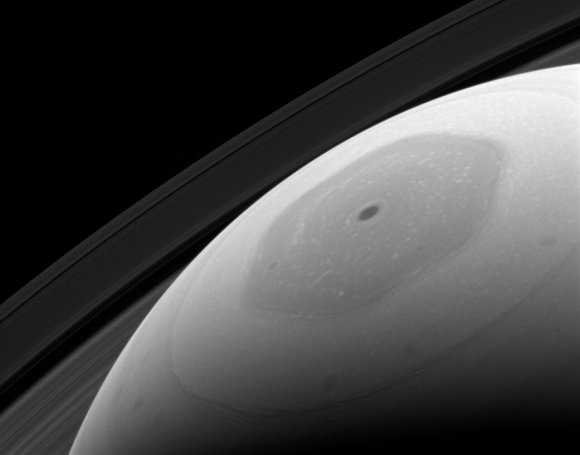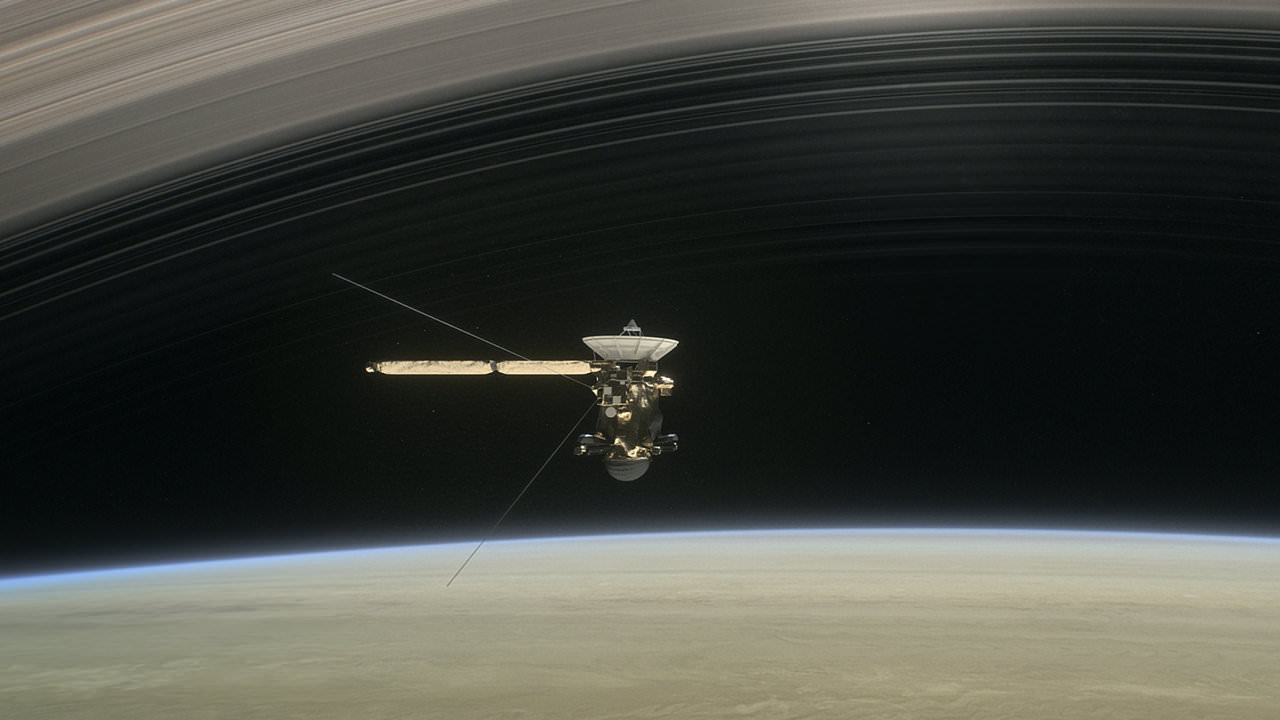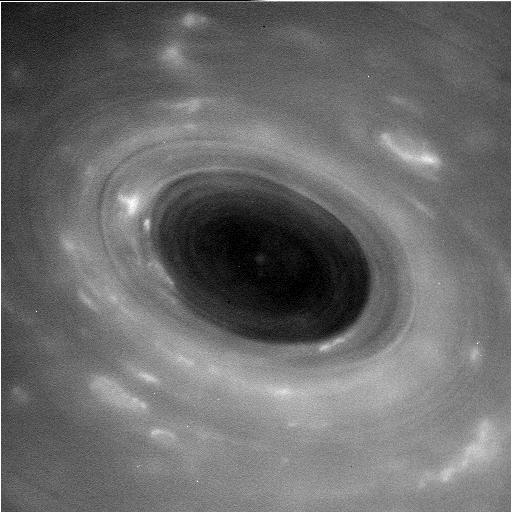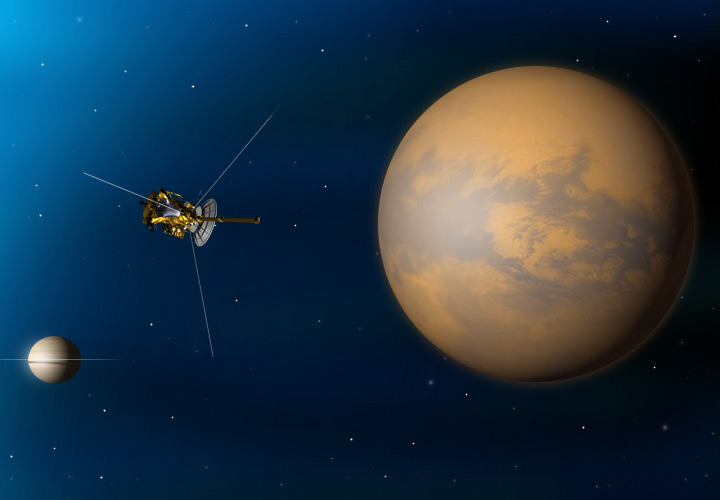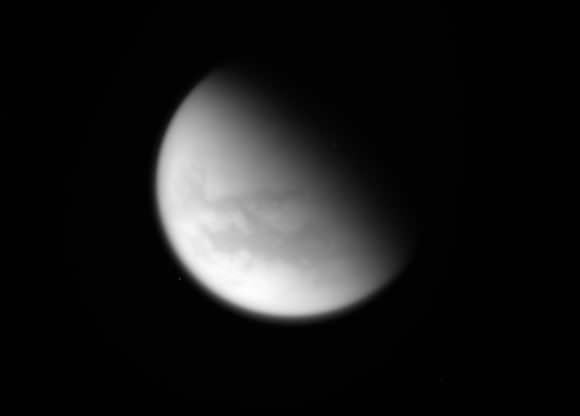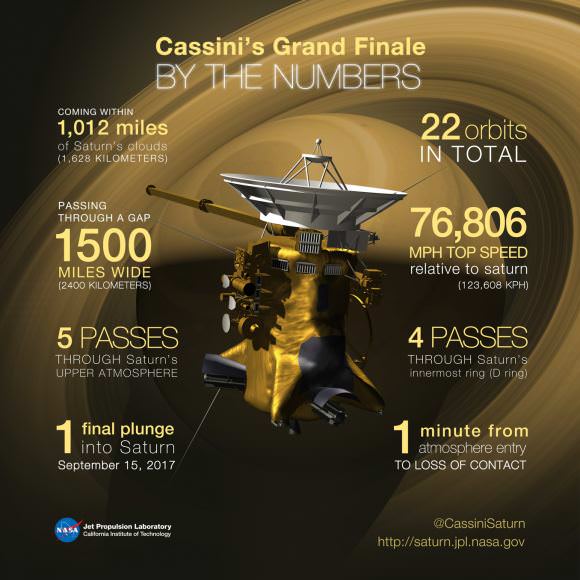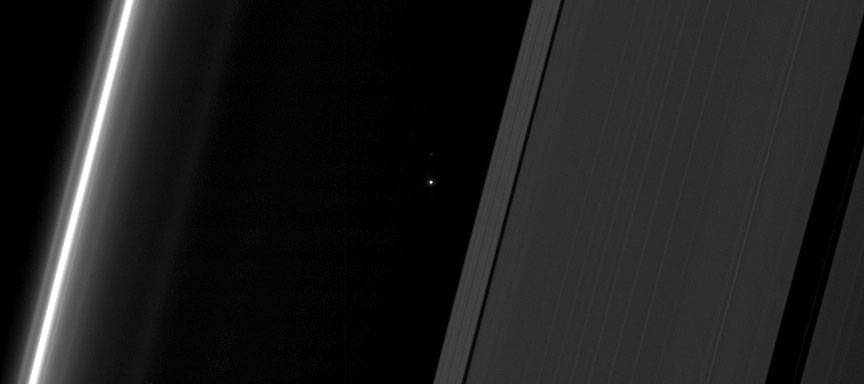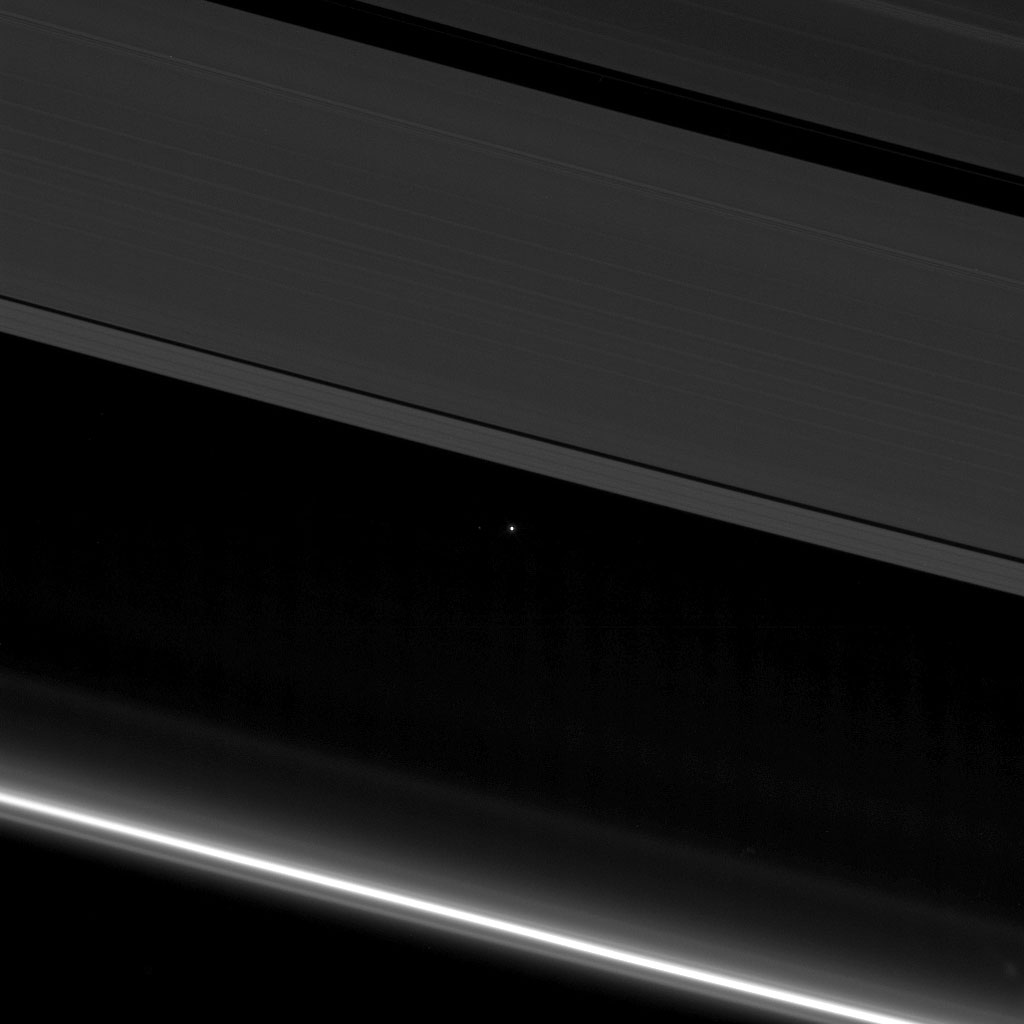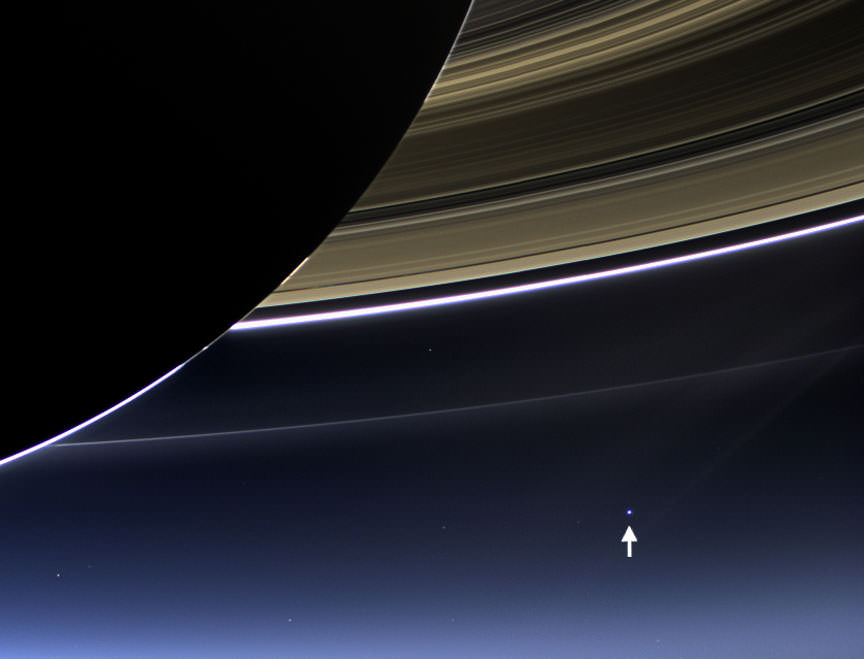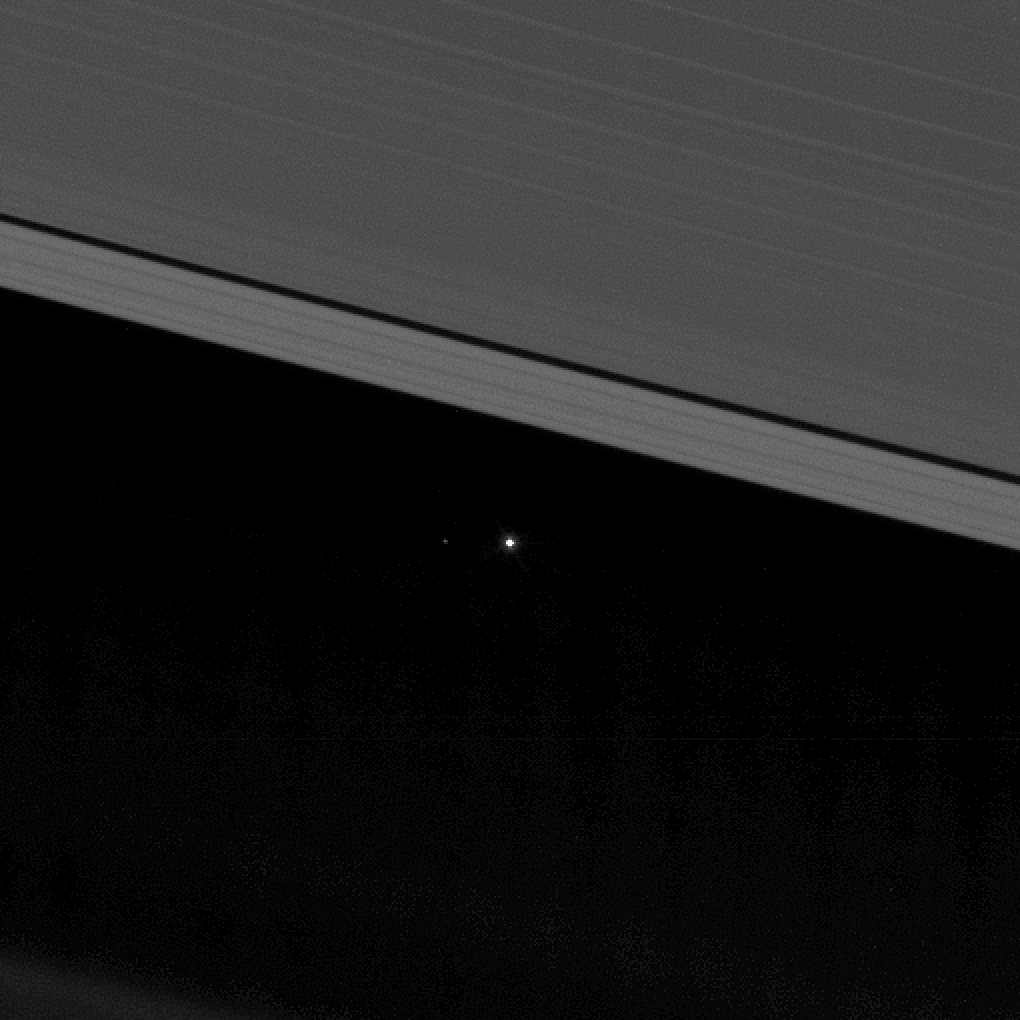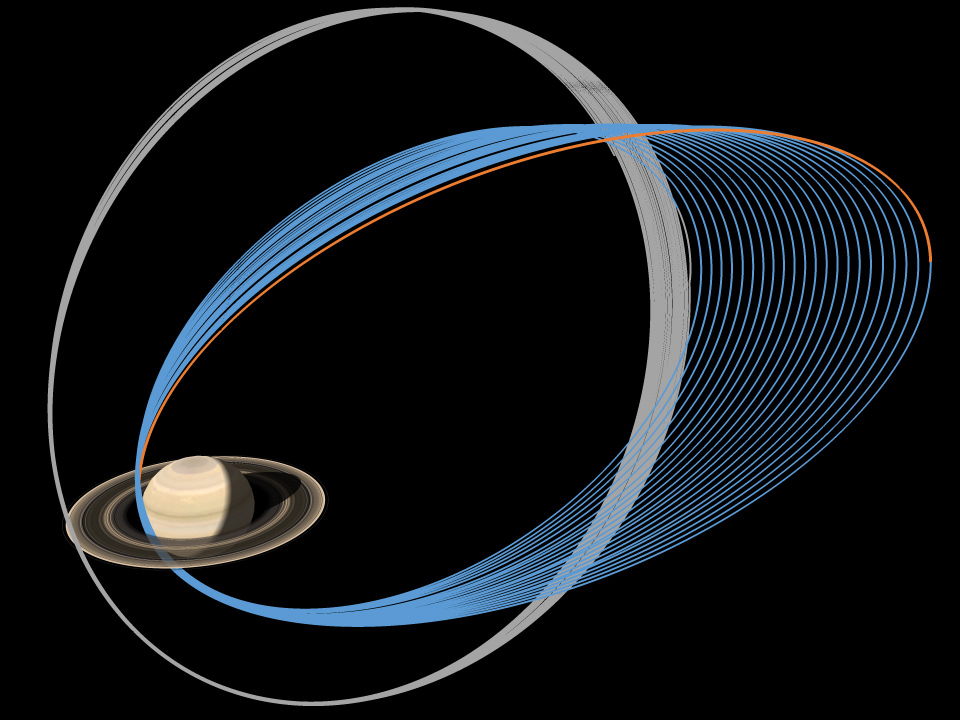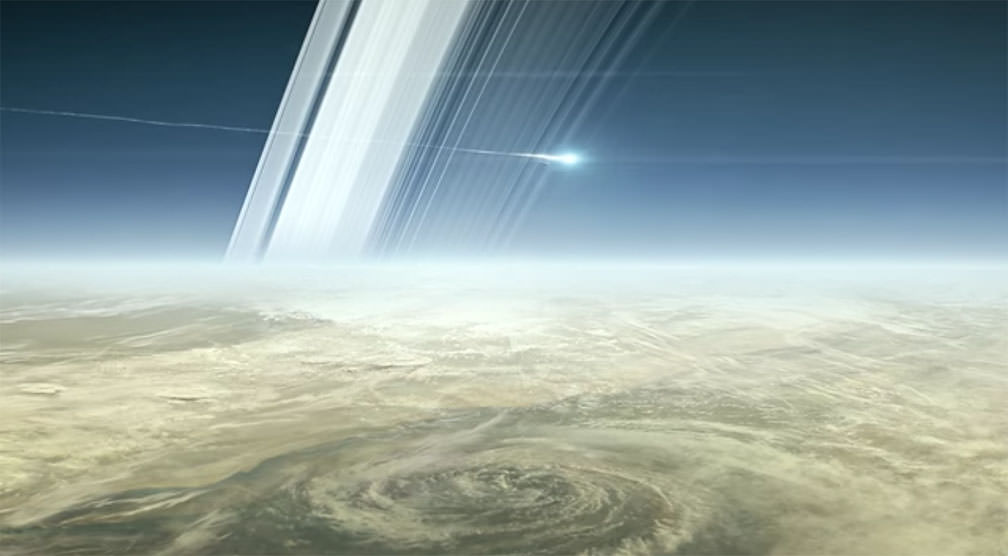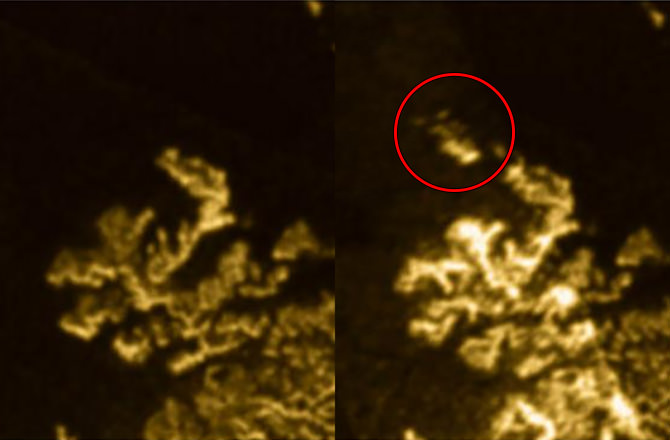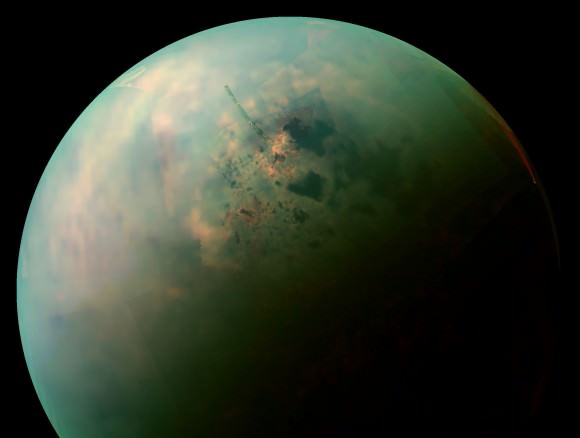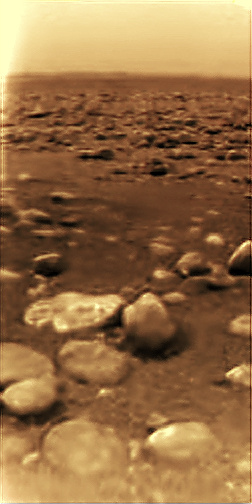On September 15th, 2017, after nearly 20 years in service, the Cassini spacecraft ended its mission by plunging into the atmosphere of Saturn. During the 13 years it spent in the Saturn system, this probe revealed a great deal about the gas giant, its rings, and its systems of moons. As such, it was a bittersweet moment for the mission team when the probe concluded its Grand Finale and began descending into Saturn’s atmosphere.
Even though the mission has concluded, scientists are still busy poring over the data sent back by the probe. These include a mosaic of the final images snapped by Cassini’s cameras, which show the location of where it would enter Saturn’s atmosphere just hours later. The exact spot (shown above) is indicated by a white oval, which was on Saturn’s night side at the time, but would later come around to be facing the Sun.
From the beginning, the Cassini mission was a game-changer. After reaching the Saturn system on July 1st, 2004, the probe began a series of orbits around Saturn that allowed it conduct close flybys of several of its moons. Foremost among these were Saturn’s largest moon Titan and its icy moon Enceladus, both of which proved to be a treasure trove of scientific data.
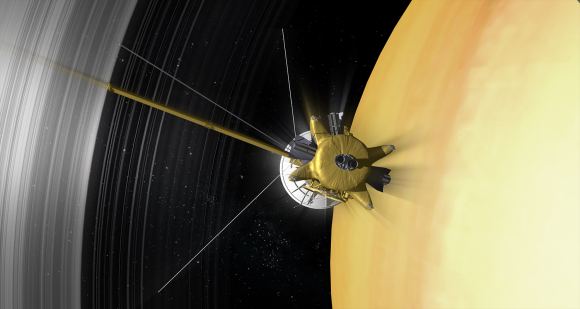
On Titan, Cassini revealed evidence of methane lakes and seas, the existence of a methanogenic cycle (similar to Earth’s hydrological cycle), and the presence of organic molecules and prebiotic chemistry. On Enceladus, Cassini examined the mysterious plumes emanating from its southern pole, revealing that they extended all the way to the moon’s interior ocean and contained organic molecules and hydrated minerals.
These findings have inspired a number of proposals for future robotic missions to explore Titan and Enceladus more closely. So far, proposals range from exploring Titan’s surface and atmosphere using lightweight aerial platforms, balloons and landers, or a dual quadcopter. Other proposals include exploring its seas using a paddleboat or a even a submarine. And alongside Europa, there are scientists clamoring for a mission to Enceladus and other “Ocean Worlds” to explore its plumes and maybe even its interior ocean.
Beyond that, Cassini also revealed a great deal about Saturn’s atmosphere, which included the persistent hexagonal storm that exists around the planet’s north pole. During its Grand Finale, where it made 22 orbits between Saturn and its rings, the probe also revealed a great deal about the three-dimensional structure and dynamic behavior of the planet’s famous system of rings.
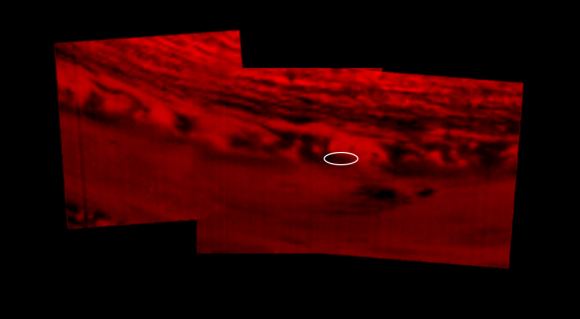
It is only fitting then that the Cassini probe would also capture images of the very spot where its mission would end. The images were taken by Cassini’s wide-angle camera on Sept. 14th, 2017, when the probe was at a distance of about 634,000 km (394,000 mi) from Saturn. They were taken using red, green and blue spectral filters, which were then combined to show the scene in near-natural color.
The resulting image is not dissimilar from another mosaic that was released on September 15th, 2017, to mark the end of the Cassini mission. This mosaic was created using data obtained by Cassini’s visual and infrared mapping spectrometer, which also showed the exact location where the spacecraft would enter the atmosphere – 9.4 degrees north latitude by 53 degrees west longitude.
The main difference, of course, is that this latest mosaic benefits from the addition of color, which provides a better sense of orientation. And for those who are missing the Cassini mission and its regular flow of scientific discoveries, its much more emotionally fitting! While we may never be able to find the wreckage buried inside Saturn’s atmosphere, it is good to know where its last known location was.
Further Reading: NASA

